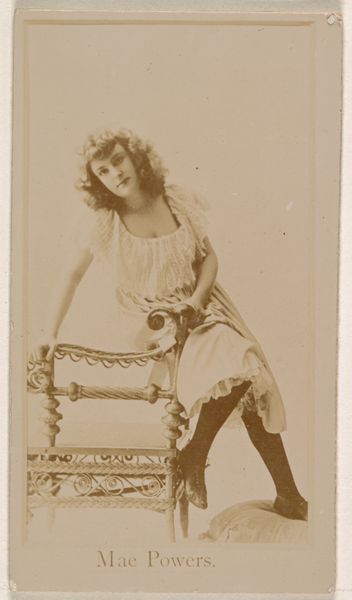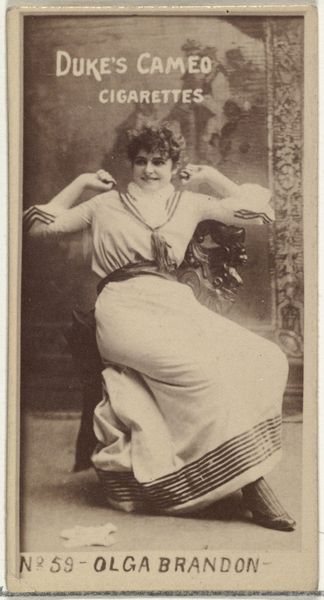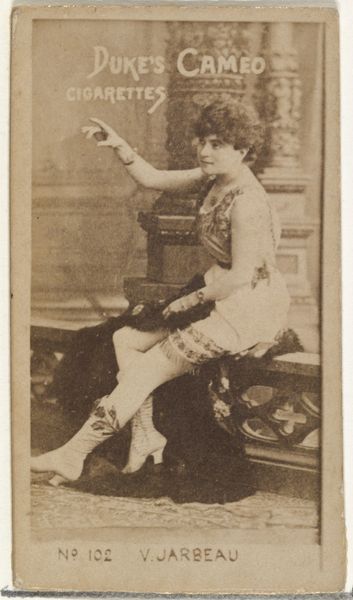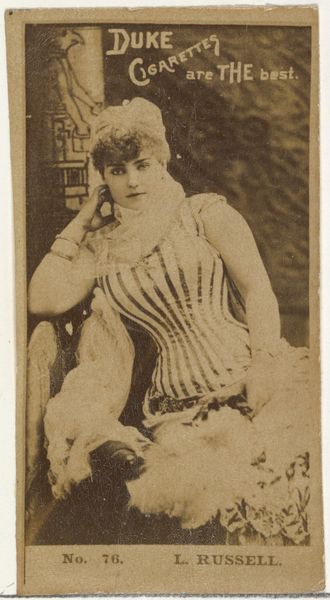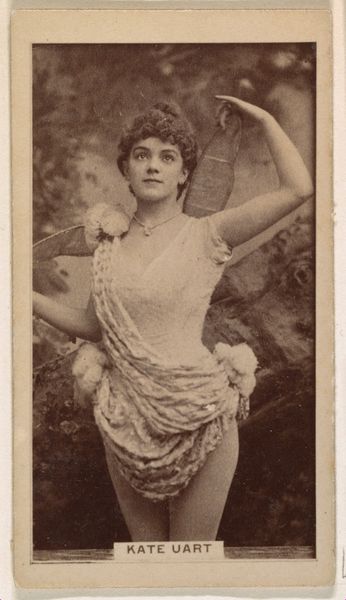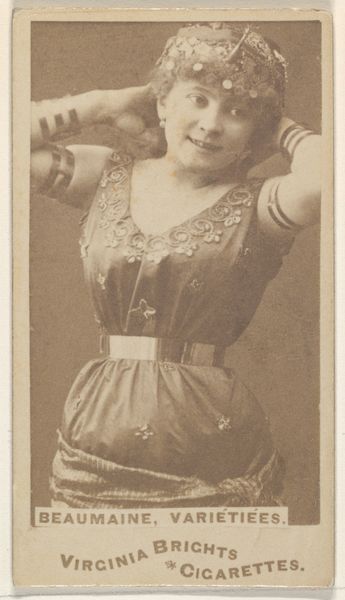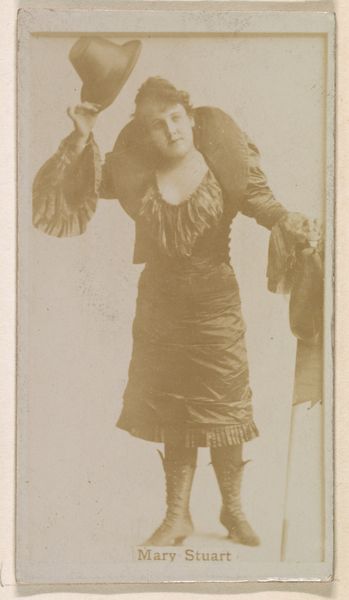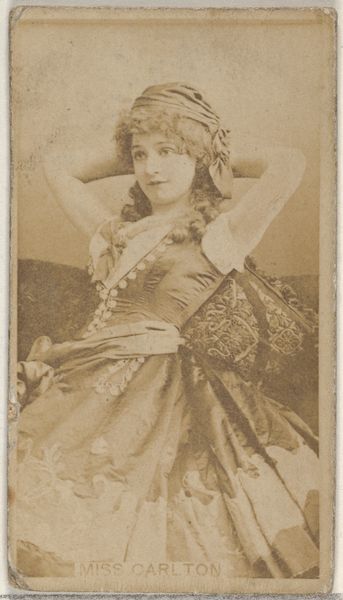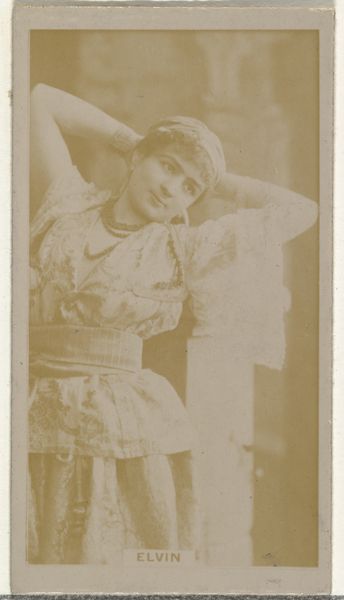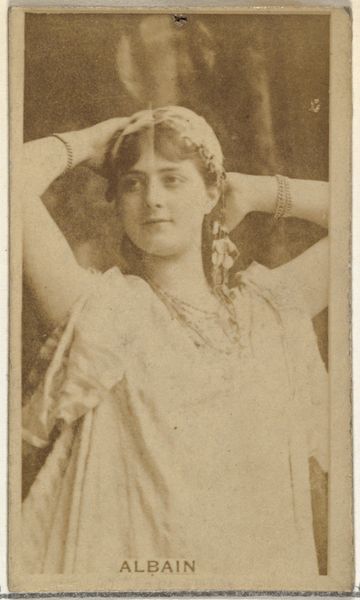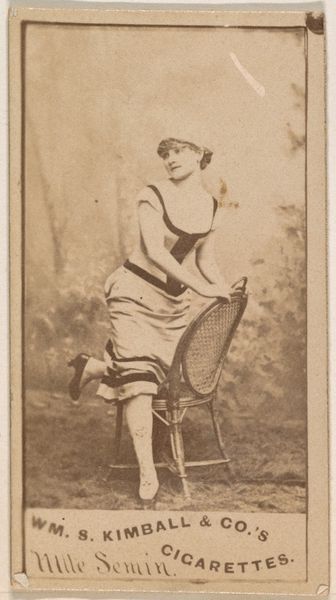
Card Number 76, Lillian Russell, from the Actors and Actresses series (N145-2) issued by Duke Sons & Co. to promote Cross Cut Cigarettes 1880s
0:00
0:00
drawing, print, photography
#
portrait
#
drawing
#
art-nouveau
# print
#
photography
#
genre-painting
Dimensions: Sheet: 2 5/8 × 1 7/16 in. (6.6 × 3.7 cm)
Copyright: Public Domain
Curator: Ah, look at this relic from the 1880s! It’s "Card Number 76, Lillian Russell," from the Actors and Actresses series issued by W. Duke, Sons & Co. A cigarette card, can you imagine? Editor: My goodness, it's tiny! And the sepia tones give it such a dreamy, old-fashioned air. She’s posed so effortlessly, like a proper porcelain doll. What’s the medium? A drawing? Or maybe photography? Curator: Actually, it's a lithograph, likely based on a photograph. These cards were incredibly popular. Imagine, collecting portraits of famous actresses while indulging in... well, cigarettes. There's some social commentary baked into the aesthetics! Editor: It feels very Art Nouveau, all flowing lines and delicate details. There’s an air of sophistication despite its, shall we say, inauspicious beginnings. Does it tell us anything about how celebrity culture began? Curator: Absolutely! These cards were instrumental in disseminating images and constructing fame. This campaign helped normalize both smoking *and* the consumption of popular entertainment, blurring the lines between performance, advertising, and social aspiration. Plus, they put celebrities, especially women, into pockets and purses across America. Talk about visibility! Editor: I love how the company’s motto, "Cross-Cut Cigarettes Are the Best," is nonchalantly placed in the composition. Advertising then was far more subtle than it is now. The image of Lillian is what sells, not aggressive branding! Curator: It is fascinating, isn’t it? And it underscores a really vital moment when popular figures became linked to commercial products, subtly dictating trends and behaviors through the sheer force of their images. It makes you wonder about who holds the power within images: is it the subject, the company using it, or the consumer buying in? Editor: Thinking about it makes you consider what it all symbolizes—vanity, pleasure, and a strange sort of immortality all wrapped up in a tiny cardboard rectangle. What an unusual thought…! Curator: Absolutely, a compact archive of desire. So much history condensed onto something disposable. Editor: A little gem, indeed. So many narratives hidden in this simple piece.
Comments
No comments
Be the first to comment and join the conversation on the ultimate creative platform.
